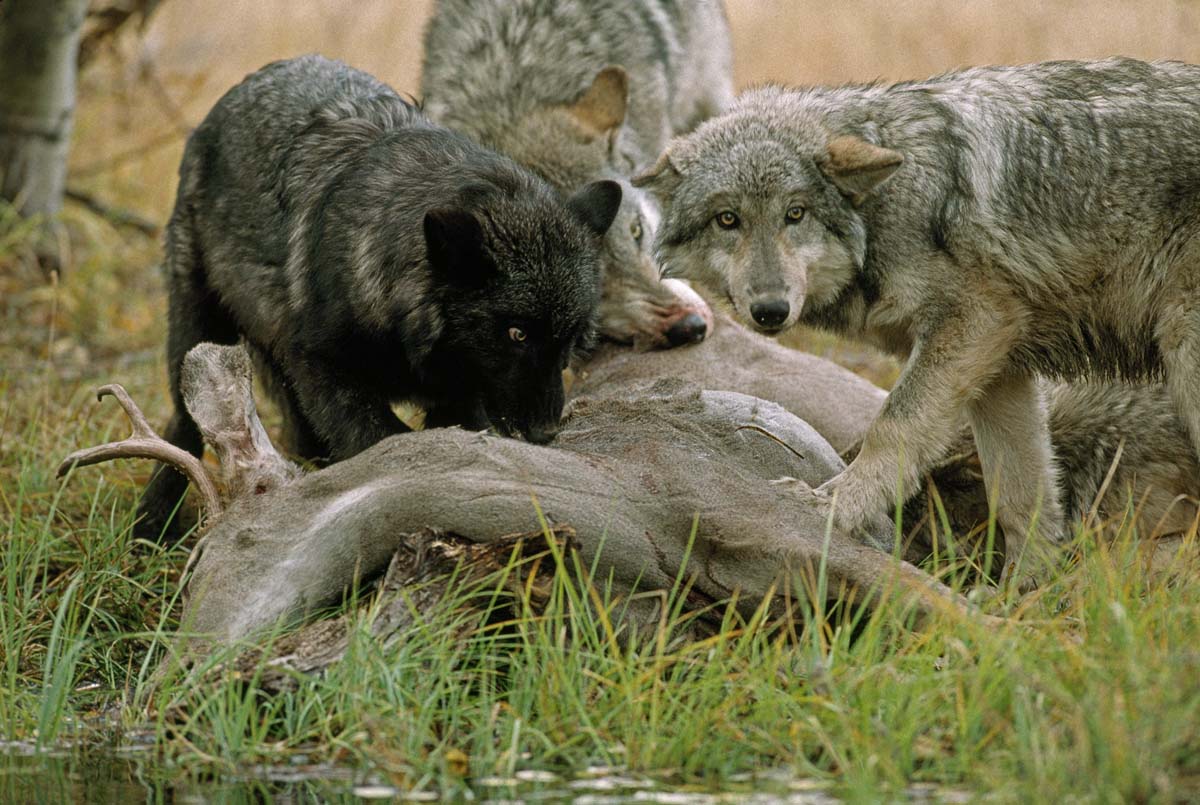
Like many other predators, wolves occasionally kill more than can be immediately eaten, sometimes resulting in the death of multiple prey animals. This uncommon behavior, known as “surplus killing,” has been documented in many predator species. Surplus killing by wolves is more likely to occur in late winter, when having a supply of food caches to return to is critical for survival. Nature is rarely wasteful, if ever. Whatever the wolves don’t eat first, is welcomed nourishment for countless other animals.
Something entirely different (and unnatural) happens when predators pursue domestic sheep. Not only do sheep lack natural defenses but their instincts often do not serve them well either. Instead of fleeing, as wild prey would do, sheep tend to run in circles. This chaos can trigger a prey response in predators that can result in multiple kills. In the Northern Rockies this behavior has been recorded with mountain lions, bears, coyotes, wolves, and domestic dogs. However, many of the incidents where multiple sheep have been killed have been the result of panicked sheep stampeding themselves.

